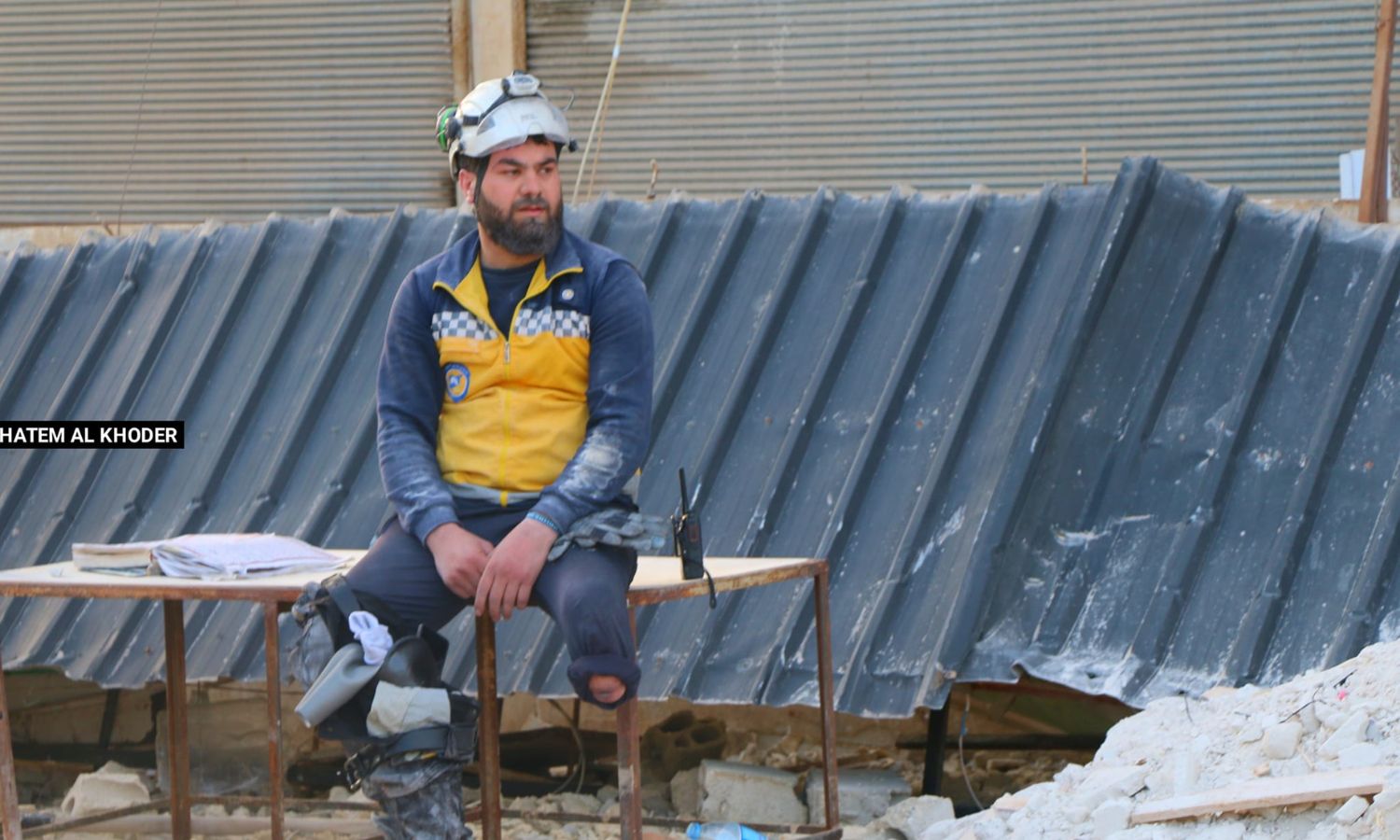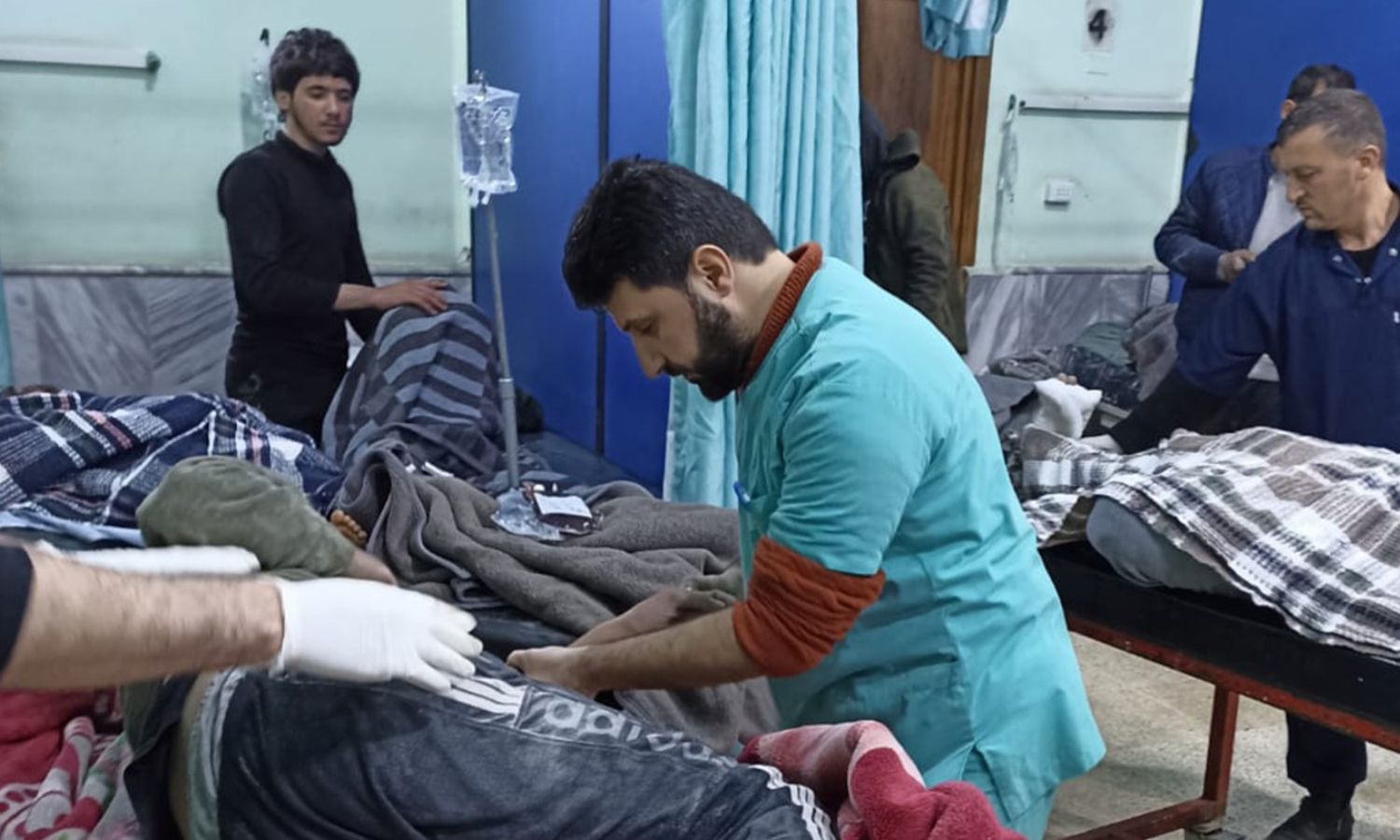



Enab Baladi – Hassan Ibrahim
With the first minutes of the earthquake that struck southern Turkey and four Syrian provinces at dawn on February 6, social media and the media were abuzz with news, images, and videos of the quake disaster, whose impact is still clear even after seven weeks of its occurrence.
Media workers, journalists, activists, and social media influencers were the voice of those trapped under the rubble, and they communicated their messages and appeals to the world in more than 60 cities and towns affected by the effects of the earthquake in northwestern Syria, with the delay in the UN response under the pretext of “logistical” obstacles.
Media professionals played an important role in transmitting the sound and image, and even the breath of the souls who were groaning under the rubble in the earthquake, which was described as the “disaster of the century.”
Some of them have become rescuers and a platform for appeals in the region, which saw 2,274 deaths and 12,400 injuries in the earthquake.
Within the first hours of the earthquake, Hatem al-Khader, a freelance journalist, went to the town of Basnia in the northern countryside of Idlib to be surprised by the scale of the disaster, which trapped more than 120 families under the rubble.
“We used to hear the voices of those trapped under the rubble,” a phrase sufficient to turn al-Khader, who wanted to take pictures of the extent of the damage, into a rescuer and volunteer alongside the people, helping them to recover the victims and bring water and food to the Syria Civil Defense rescuers.
Al-Khader told Enab Baladi that he, along with a group of volunteers, contributed to recovering the victims and rescuing those trapped under the rubble, on the one hand, and securing some food, juices, and traditional tools to help in digging, on the other hand.
Al-Khader continued his coverage in other cities affected by the damage, using his drone to convey the extent of the destruction in a more comprehensive manner.
With the lack of heavy machinery and equipment arriving to expedite the rescue of the victims and moments of helplessness and disappointment mixed with determination and persistence on the part of the people and volunteers, voices and images came out from under the rubble as a glimmer of hope from under the rubble.
Al-Khader took a photo of the White Helmets volunteer Hassan al-Talfah, with his prosthetic foot after he lost his leg in a cluster bomb explosion while carrying out an operation to remove unexploded ordnance years ago.
The picture was taken in a hurry, without the man’s attention, while he was sitting and taking a break. Al-Khader published it after hesitating for three days, writing, “There is no need to write captions, quotes, narrations or anything. This is an image that speaks for itself and tells many stories.”
Al-Talfah’s photos went viral on social media platforms, accompanied by comments full of appreciation and respect, which considered him a symbol of determination, persistence, and response to the disaster with humanitarian and moral motives.

White Helmets volunteer Hassan al-Talfah, with his prosthetic foot, contributed to the rescue operation in Idlib countryside following the Feb.6 earthquake. February 2023 (Facebook/Hatem al-Khader)
Abd al-Razzaq Zaqzouq, a journalist at the Syrian American Medical Society (SAMS), woke up to the earthquake, believing that it was a regime bombardment on Maarat Misreen town, where he based, and as most of the northern region accustomed to thinking.
As quake news spread, he immediately checked over the phone if his Azaz-based family was safe.
Zaqzouq told Enab Baladi that he went to Bab al-Hawa Hospital to see the large number of victims inside, adding, “The bodies filled the ground, the emergency cases were dense, and every five injured people were being resuscitated at the same moment.”
The local journalist took some pictures of the cases received by the hospital, suggesting at that time that the pressure on Bab al-Hawa Hospital was due to its proximity to the earthquake site, as he was not aware of the great scale of the disaster.
“The first time I saw the children whose lives were lost by the earthquake in al-Atarib Hospital, my children and my wife came to my mind, and I knew the scale of the disaster that had befallen northern Syria.”
This is what Zaqzouq envisioned when he entered the hospital in the countryside of Aleppo about four hours after the earthquake. He went to it after receiving information about the large number of injuries, the interruption of the Internet, and the monitoring of the influx of victims, with the presence of dead children wrapped in medical gowns.
“I covered a lot of the bombings and massacres that took place in Syria, but I didn’t have the courage to look at the faces of the dead children,” Zaqzouq added.
With news and appeals for support and assistance in rescuing the victims, the features and scale of the disaster began to become clear, which required strongly transmitting the voice of the people and continuing to work until all manifestations of the suffering end, according to Zaqzouq.
He continued his media coverage of the scale of the disaster and coverage of the medical response to the victims, and he was unable to see his family and children until nine days after the earthquake.

Providing first aid to the quake-injured people in northern Syria – February 6, 2023 (Facebook/SAMS)
“When I traveled to Antakya, the humanitarian duty represented in rescuing the victims trapped under the rubble made journalistic work out of consideration.” This is the reason that pushed Syrian journalist Ahmed Haj Bakri to head from Istanbul to southern Turkey.
Haj Bakri did not succeed in rescuing his relatives alive from under the rubble. He buried 30 of them in an unofficial cemetery in the Yayladağ area near the Turkish-Syrian border and helped rescue people who were not related to him from under the rubble in the same area.
The journalist assured that his response was humane and ethical, and there was no choice or room to think about it.
“I am a human being, what motivated me is conscience and humanity. I am not an employee of the United Nations or a political entity to delay a purely humanitarian response or wait for someone’s permission,” he told Enab Baladi.
Haj Bakri conveyed his story to the world and the stories he lived through in the affected areas, whether in the Turkish state or in northern Syria, covering the reality of the cities and the voice of the people.

Syrian journalist Ahmed Haj Bakri on top of the rubble in Antakya city, following an earthquake that struck southern Turkey and northern Syria – February 15, 2023 (Facebook/Ahmed Haj Bakri)
The world is accustomed to witnessing scenes of destruction in Syria with different causes, just as Syrian media professionals have been accustomed to reporting and covering the events of killing and destruction since the outbreak of the Syrian revolution in March 2011, along with the continuation of international humanitarian and human rights organizations in documenting the hundreds of thousands of civilian victims killed by the regime and its allies.
The scene of the roofs of houses stacked on top of each other and the walls collapsing into crumbs in the town of Jindires in the northern countryside of Aleppo, which was the most affected place in the north.
Zaqzouq recalled the scenes of destruction witnessed by the city of Aleppo when the Syrian regime besieged it in 2016.
Zaqzouq explained that the difference in coverage is that during the siege of Aleppo, the media covers one place, while the earthquake disaster spread from the city of Jarablus in the northeastern countryside of Aleppo to the western and southern countryside of Idlib, with a strip that extends for about 200 kilometers.
In turn, Haj Bakri considers that the media coverage, whether in the operations of evictions, displacement, bombing, massacres, or in the earthquake, is a response to conscience, principle, humanity, and moral duty.
On February 6, a devastating earthquake struck southern Turkey and four Syrian governorates, and volunteer teams and residents in northern Syria demanded the introduction of equipment and machinery to expedite rescue operations for those trapped under the rubble.
The demands were met with international excuses that there were logistical obstacles to the arrival of aid over the four days of the earthquake, which experts and humanitarian activists attributed, in their interview with Enab Baladi, to the fact that the United Nations “failed the Syrians,” and showed clear neglect of their needs during the disaster.
They said that there are many indications that it deliberately delayed the arrival of aid and contributed to turning rescue operations into recovery operations of dead bodies.
if you think the article contain wrong information or you have additional details Send Correction